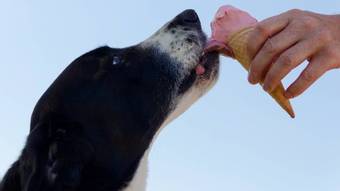According to the Brazilian Diabetes Association, there are more than 13 million people live with the disease In the country, which is equivalent to 6.9% of the country’s population. But, just like humans, can pets also get this disease? To answer that question, explains Eric Vieira, MD, a veterinary endocrinologist at Pet Care RPet Causes, care and treatment in dogs and cats.
diabetes (diabetesA chronic disease characterized by high blood sugar levels. “We say a pet has diabetes when their pancreas cannot produce a hormone called insulin, or when that insulin is unable to meet the needs of their body,” he says.
Vieira says that insulin is responsible for glucose regulation in animals, as it is in humans. “Without it, pets run out of energy and have excess sugar in their circulation, among other health changes,” he explains.
Cause, symptoms and diagnosis
Vieira claims that the causes of diabetes in animals are genetic factors, certain hormonal disorders, obesity, drug administration (such as corticoids), pancreatitis, and genes. Among the most common symptoms are increased appetite, thirst and urine volume, as well as weight loss and cataracts.
The vet knows, “This disease makes pets very hungry. It is the body’s attempt to make up for the lack of energy, since it is not properly distributed to all tissues. Until they eat more, they lose weight.”
To diagnose the disease in the pet, the professional indicates that the teacher immediately takes him to a veterinarian, if he recognizes one of these symptoms, and highlights the importance of annual check-ups of the animals.
“To find out if a dog has diabetes, it is necessary to assess the level of glucose in the blood and urine. In a cat, since the simple pressure of getting him out of the house can change the results of the tests, a complementary test, fructosamine, is able to detect if the glucose level is in the blood was elevated for a few weeks and not just at the time of collection,” he said.
The difference between diabetes in dogs and cats
Dogs usually stop producing insulin when they become ill. “Their diabetes is similar to type 1 compared to humans. Treatment or remission of diabetes in dogs is very rare. Once diagnosed, the animal will need to be monitored for the rest of its life,” says Vieira.
Share this news on WhatsApp
Share this news on Telegram
With cats, the main cause of which is obesity, the situation is different. They produce insulin, but this is not enough. “Type 2 diabetes in humans is the closest thing to a feline disease. By controlling the disease with weight loss, it is possible for cats to recover. Cats can stop developing diabetes for months, years, or a lifetime,” says the vet.
Prevention and treatment
Adopting a healthy lifestyle is the best way to prevent disease. Food should always be of good quality, balanced and in the right quantity.
“Without adequate disease control or if caught late, dogs can develop cataracts. Cats can develop diabetic neuropathy, a condition that causes weakness and pain when walking, especially with their hind legs,” warns Vieira.
The professional says that the treatment is carried out using insulin and an individual diet for each pet.
“Insulin injections should be applied every 12 hours in most animals and at the same times each day. To monitor your dog or cat’s diabetes, you need to keep track of the progression of disease symptoms and blood glucose levels,” he comments.
South American Pets: Market news and everything from Latin America’s largest pet show

“Wannabe internet buff. Future teen idol. Hardcore zombie guru. Gamer. Avid creator. Entrepreneur. Bacon ninja.”

